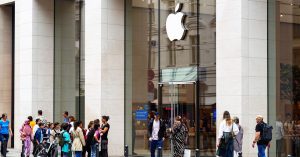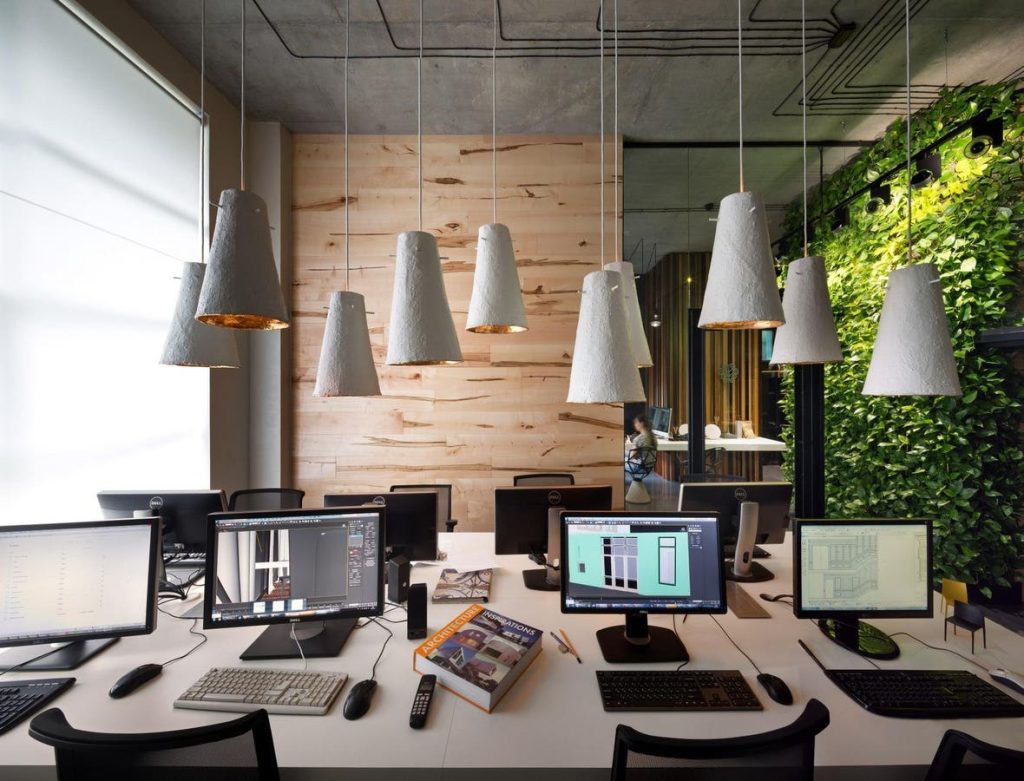When most people think of accessibility and assistive tech, they mostly think of software: operating systems and apps and websites. That’s logical and the natural inclination. The physical, three-dimensional spaces in which we live and work typically aren’t associated with technology companies from an accessibility angle. For that, laws on the books like the Americans with Disabilities Act, more colloquially known as the ADA, does well to regulate the outside world. Accommodations such as curb cuts, wheelchair ramps, and disabled parking spaces—things people are familiar with—exist because the ADA says it so.
For LaFawn Davis and Indeed, accessibility includes physical spaces.
Davis, Indeed’s senior vice president of environmental, social, and governance, told me in an interview last month—which, incidentally, happened during National Disability Employment Awareness Month—her role involves helping job-seekers from marginalized communities (cf. disabled people) enter the workforce. It’s also important to Davis and team to help people break through barriers such as criminal records, the lack of a collegiate degree, and more. More pertinently to physical spaces, Davis said Indeed focused on what she described as “retrofitted office space and guidelines for future buildings to ensure that the accessibility of our workplaces go beyond code compliance.”
The goal, Davis said, is to make Indeed more accessible and inclusive.
“We want to share how we took this [physical spaces project] on so that other companies can follow suit,” Davis said.
According to data Davis shared, Indeed has to date retrofitted 16 offices with this accessible ethos. A major aspect of the work, she added, was “making all offices consistent globally for traveling employees and for visitors.” Employees, Davis said, were asking in biweekly Q&A sessions what the company is doing not merely to be compliant but be disruptive. The work on physical spaces is one such manifestation of disruption, with Davis saying “it’s an ongoing project” that will incorporate ideas for adjustments and the like. It’s not a vanity project or one-and-done deal.
As a practical matter, Indeed has teams spanning disciplines across the organization—Apple CEO Tim Cook often likes to call this “deep collaboration”—that came up with a matrix that Davis said “[creates] consistency across the office space, both in our existing office and any new builds.” Much of the design work involved garnering feedback from focus groups, as well as employees whose lived experiences might help inform what and how to build certain elements. And of course, there were logistical concerns regarding budget and other areas of feasibility. All of these learnings were packaged and delivered to company leadership as a sort of “accessibility settings” for the project that featured various degrees of negotiability. Indeed’s employee resource group, called Access, has over 1,100 members worldwide and had a heavy hand in designing these spaces specifically due to, as mentioned earlier, Davis and team’s insistence on leaning on people’s lived experiences.
“[Accessibility is] not just our products and technology. It’s also our physical spaces,” Davis said of Indeed’s ethos on accessibility. “We wanted to make sure we were able to highlight the voices of our employees with disabilities [and] our potential job-seekers and candidates and clients with disabilities to ensure their voice was heard.”
Davis said although Indeed has discussed its product accessibility work in the past, the company felt a compulsion to bring in the physical component as well. Making sure users and workers have equitable access is, David told me, “a core value” to Indeed. It’s one of those aforementioned non-negotiable items. More pointedly, David said Indeed considers the disabled community a “core population” that drives a lot of what happens inside and outside of the company. The efforts Indeed have made in this realm have been concerted, with Davis saying they “definitely want to shout it from the rooftops” because they want others to look at what they’ve done and draw inspiration to undergo a similar endeavor for their company. The work in making physical spaces accessible is even more important considering an increasing number of organizations are mandating people return to work. While Indeed understands the value and accessibility of working remotely, they feel a responsibility to make offices as inclusive as possible for everyone.
“We want other companies to understand what we already do,” Davis said of the philosophy behind sharing their work reimagining physical spaces in the name of inclusion. “The return to office may be a barrier for some, and we want them to take steps to remedy this—whether that’s changing the office space to be more accessible or allowing more employees to remain work from home. It’s important for us to talk about the fact we’re doing this work, but honestly, it’s also more of a call to action so that job-seekers, already facing barriers and employees with disabilities, don’t lose the ground they’ve gained in being employed.”
Alluding to what I wrote in the lede, Davis and team are keenly aware the majority of technology companies think of accessibility in product terms. The literal building in which they ruminate over pixels and marketing prose usually isn’t thought of as something that could be made accessibly. Davis is an ardent believer in the idea that physical spaces have the potential to make a “big difference” in terms of accessibleness and inclusiveness. Importantly, they wish not to stand alone. The team hopes others will be “inspired to make changes within their physical office spaces” in order to bolster an inclusive culture.
Going forward, Davis was candid in her humility with Indeed’s accessibility work, whether in product or the physical space. In both arenas, she readily concedes they aren’t perfect and “don’t know everything.” In their march towards institutional self-actualization, Davis told me Indeed is committed to soliciting feedback and incorporating new ideas and essentially just learning as they go along. To borrow an old (and tired) cliche from interviews with athletes everywhere, Davis and Indeed work hard every single day to get better.
“I think this is going to be something that we continue to just adjust over time,” Davis said of her visions for the future. “There could be spaces that work better for people who are neurodiverse, and we want to hear about how the spaces work for them. We continue to leave the door open [and we] continue to listen, and we’re getting great feedback so far.”
Read the full article here










